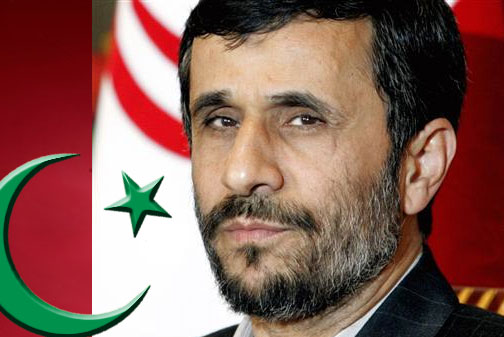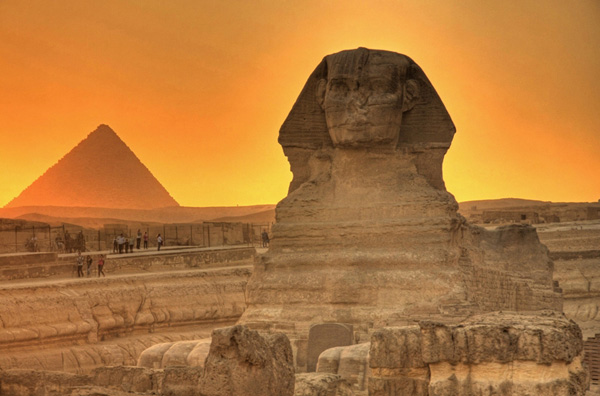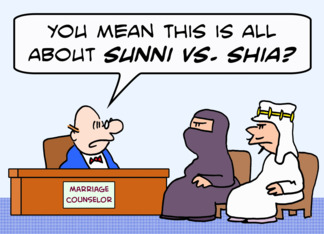The Ka’aba – As the most holy site
in all of Islam, the Ka’aba is easily one of the most important artifacts in the Middle East. “During the holy months, when the desert
fairs and the great markets envelop the city of Mecca, pilgrims from all over
the Peninsula make their way to this barren land to visit their tribal deities,”
(Aslan 419-420). Not only do people from
all over the Peninsula make their way, but Muslims from all over the world seek
pilgrimage to Mecca in order to pray around the Ka’aba. The Hajj pilgrimage is one of the five pillars
of Islam. Within this, those that voyage
will walk around the structure seven times.
For the average Muslim, when the call to prayer comes every day, it is
the Ka’aba in Mecca that he or she faces when praying. For these reasons alone, the Ka’aba is
arguably the most important artifact to the Islamic culture that still remains
today.
Mahmoud Ahmadinejad – As the sixth
President of Iran, Mahmoud Ahmadinejad is a very controversial figure. Accused
by many of rigging his election in 2009, his negative stance on homosexuality
and his denial of the holocaust, Ahmadinejad is quite obviously not a crowd
pleaser. “What Ahmadinejad shows about
the complexity of the Middle East is that it is not one uniform group of
beliefs,” (Schlak). After the Iranian
Revolution occurred, Ahmadinejad’s family became highly involved with politics in
the region. He is an extremely
conservative figure and has the primary focus of making Iran an Islamic
state. Because of his stature and prominence
at a global level, Mahmoud Ahmadinejad is one of the most important figures in
the Middle East.
The Great Sphinx – The Great Sphinx is an artifact that is different from many in the Middle East. It is highly symbolic of the history of the
region. The Sphinx still stands today, its
face broken and battered, but nonetheless it remains, much like the region and
its history. It has lasted through
all the suffering along with the people. It does not have a truly defined existence
other than the fact that it does exist. Although
the Muslim people of the world clearly do have a defined existence, there is
still a sense of a lack of identity, in particular due to the ongoing wars of
Israel and Palestine. However, much like the Sphinx, these people today still
stand as a prominent player in the world. The Sphinx acts as a great symbol of
how strong the people of the Islamic culture are, from 4500 years ago to
present day.
The Western Wall – The Western Wall is one of the holiest sites within Jerusalem and is deemed as the most
important Jewish shrine remaining. Built
in 20 BC as a retaining wall to the Temple Mount complex, it is the only
remaining fragment remaining from the Roman devastation. It is common belief that the Divine Presence
never left the wall, thus praying to it is considered praying directly to
God. It is a divine place for all Jewish
people around the world. “The ancient
2,000 year old stones of the Wall have witnessed the Jewish peoples birth,
exile and redemption. The Western Wall is a living testimony to the strength
and resilience of the Jewish nation,” (Fichera). Much like the Ka’aba is arguably the most
important artifact remaining for Islam, the Western Wall is one of the most
important remaining artifacts for the Jewish people.
Osama Bin Laden – As the founder
of Al-Qaeda, Osama bin Mohammed bin Awad bin Laden is a very important person to the Middle East.
Perhaps, though, his importance comes from the rumors and myths that
have been spread of him over the past few decades. Bin Laden was one of the United States
primary targets throughout the war in Iraq after being accused of the September
11th attacks. He fully
believed in the right for violent jihad against those that went against his
Muslim beliefs. Although common belief
is that he attacked outsiders more often than not, Al-Qaeda does not hold back
on anyone. “Al-Qaeda leaders regard liberal
Muslims, Shias, Sufis, Ahmadiyyas and other sects as
heretics and have issued attacks on their mosques and gatherings,”
(Dannreuther). The tactics that Bin
Laden has used and the mass amount of terror that he has spread allows for him
to be deemed one of the most important, yet dangerous, people in the Middle
East.








.png/482px-West_Bank_&_Gaza_Map_2007_(Settlements).png)



